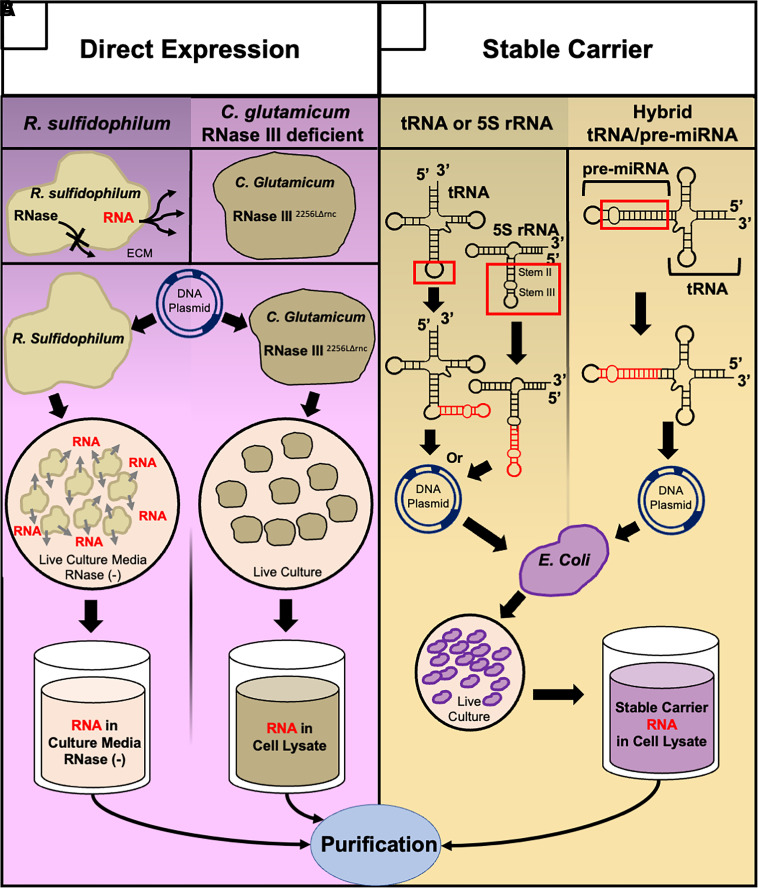Fig. 3.
Novel biotechnologies to produce biologic RNAi agents. (A) Direct expression is one class of novel RNAi agent production. Two forms of direct expression make use of two bacterial strains, Rhodovulum sulfidophilum and an RNase III–deficient Corynebacterium glutamicum. The marine phototropic bacterium R. sulfidophilum has the capability to efflux oligonucleotides such as RNA but not RNases. These characteristics allow R. sulfidophilium to be transformed with an RNA expressing plasmids for direct expression of the target RNA followed by efflux and accumulation in RNase free culture media. Accumulated RNA in culture media can then be isolated and purified to attain the target RNA molecule. A novel strain of C. glutamicum contains a mutation in the RNase III gene (2256LΔrnc) and provides an RNase III ribonuclease–free bacterium for RNA accumulation. Target RNA may be directly expressed and accumulated in C. glutamicum free from RNase degradation for later isolation from cell lysate and purification. (B) The use of stable carriers constitutes the other class of novel RNAi agent production. Transfer RNA (tRNA) and ribosomal RNA (rRNA) can each function as stable RNA scaffolds. By retaining structures and sequences of these highly abundant RNA classes, target RNA is expected to exploit endogenous recognition and accumulate within bacteria. As most recombinant RNAs cannot be overexpressed with tRNA or rRNA scaffold, specific hybrid tRNA/pre-miRNA molecules showing high-level expression in E. coli have been identified, developed, and proven as unique carriers to effectively accommodate a wide variety of target RNAi molecules including RNA aptamers, miRNAs, siRNAs, or sRNAs along with their complimentary sequences for high-yield and large-scale production of biologic RNAi agents.

